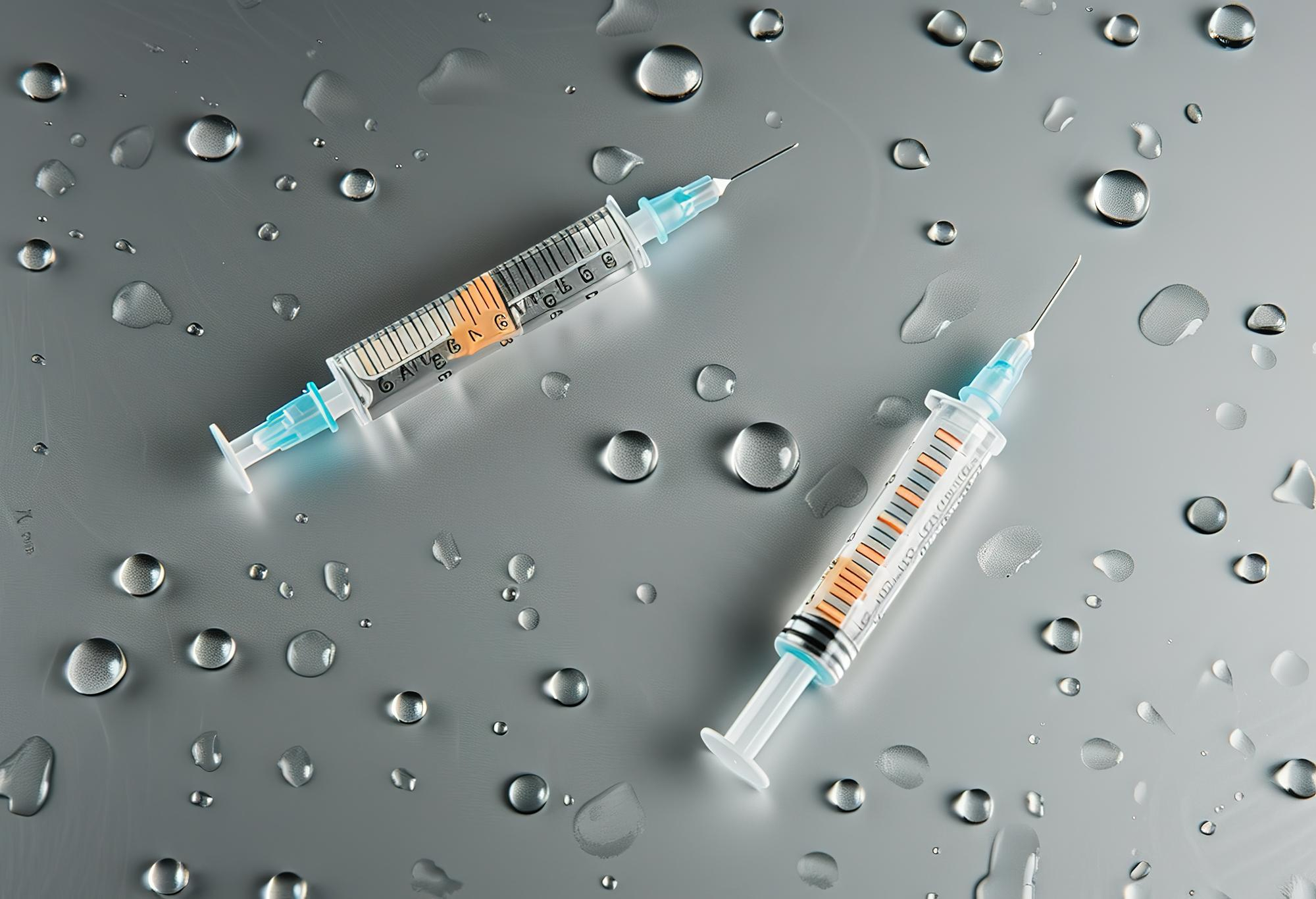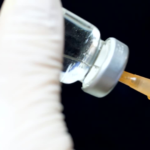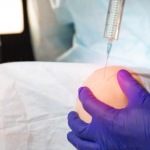
According to Bhandari et al. (2017), intra-articular hyaluronic acid (HA) injection is an effective and well-tolerated treatment for mild-to-moderate knee osteoarthritis. The study highlights HA injections’ significant improvements in pain, function, and stiffness up to 26 weeks compared to placebo, with no increased risk of serious adverse events.
Individuals suffering from knee osteoarthritis (OA) can find relief through intra-articular hyaluronic acid injections for the knee. This non-invasive approach can provide symptomatic management of chronic pain, swelling, and stiffness associated with knee OA. Among the various brand-name options available, healthcare providers often suggest Orthovisc and Supartz as practical solutions for long-term relief in knee OA patients.
In this article, we will compare Orthovisc and Supartz, their mechanisms of action, safety profiles, efficacy, and recommended dosage and administration guidelines.
Key Takeaways
- Comparing Orthovisc vs Supartz can help medical professionals and patients determine the most suitable therapy for the patient’s goals, needs, OA condition, and overall health.
- Orthovisc and Supartz may have similar therapeutic indications and efficacy but differ considerably in their chemical structures, solution formulation, and composition.
- Orthvisc and Supartz act as lubricants and shock absorbers, reducing friction, pain, and inflammation
- For patients to achieve the full effect of these viscosupplements, medical professionals must administer multiple once-a-week injections.
About: Medica Depot is your trusted all-in-one supplier, offering a range of high-quality medical injectables and supplies. If you’re looking to order Orthovisc online, you can do so on Medica Depot quickly and easily. We offer a worry-free experience in searching for the best and most popular products on the market. Whether for health professionals, plastic surgeons, dermatologists, licensed estheticians, or other specialists, we can offer genuine, brand-name products you may need. With Medica Depot, we prioritize serving you better to improve the patient’s quality of life.
Introduction to Orthovisc and Supartz
Hyaluronic acid (HA) is a natural substance in the body, particularly in the eyes, joints, and skin. HA injections serve two primary purposes: as a biomedical product and as an aesthetic anti-aging procedure. HA injection treatments are under non-surgical solutions, yet an effective alternative for those who are not yet candidates for surgical interventions.
Orthovisc and Supartz have shown their safety and efficacy in knee osteoarthritis (OA). They require direct injection into the affected knee joint to provide symptomatic relief from knee OA symptoms. Comparing Orthovisc vs Supartz can help medical professionals and patients determine the most suitable therapy for the patient’s goals, needs, OA condition, and overall health.
Formulation and Composition

Orthovisc and Supartz are viscosupplements. The potency of hyaluronic acid (HA) underpins their effectiveness. This substance is naturally present in our bodies, predominantly in our skin and joints. Moreover, it is the principal natural component of the synovial fluid found in our joints.
Orthovisc knee injections contain a sterile blend of highly purified hyaluronic acid from rooster combs. The high-molecular-weight hyaluronic acid derived from this source efficiently replicates the viscoelastic properties of natural synovial fluid.
Meanwhile, Supartz FX is a sterile solution that exhibits viscoelastic properties and is non-pyrogenic. It is composed of purified, high-molecular-weight sodium hyaluronate. In every milliliter of Supartz FX, 10mg of sodium hyaluronate is dissolved in physiological saline. Interestingly, Supartz derived its sodium hyaluronate from chicken combs.
Orthovisc and Supartz may have similar therapeutic indications and efficacy but differ considerably in their chemical structures, solution formulation, and composition. They derived their high molecular weight hyaluronic acid from rooster and chicken combs.
Orthovisc and Supartz’s Mechanism of Action

The mechanisms of action for Orthovisc and Supartz operate in a manner that is similar to those of other viscosupplementations. 0Although they may differ in their formulation, composition, and dosing regimen, they can effectively treat patients with knee osteoarthritis (OA).
Orthovisc or Supartz injections supplement the lost hyaluronic acid (HA) in the joint’s synovial fluid to manage patients’ knee OA symptoms. The synovial fluid surrounds the joints with the replenished HA, allowing pain-free movement and improved function and mobility.
These viscosupplements restore the synovial fluid’s lubrication and cushioning properties. Once their solutions reach the affected joint, Orthvisc and Supartz act as lubricants and shock absorbers, reducing friction, pain, and inflammation.
Clinical Efficacy
A randomized controlled trial led by Neustadt et al. (2005), involving 372 participants, showed the effectiveness of Orthovisc. The study proved that Orthovisc’s high molecular weight injection is a safe and efficacious treatment for knee osteoarthritis (OA). 76% of the patients reported a significant improvement in pain scores, reflecting an improvement of over 20%.
On the other hand, according to Bronstone et al. (2019), Supartz is a safe and effective treatment for knee osteoarthritis (OA). This clinical review showed the significant benefits that Supartz can bring after three to five injections, such as pain reduction and improved subjective function in patients with mild to moderate knee OA.
While only several clinical data are available online, these have shown the efficacy of Orthovisc and Supartz in addressing knee OA concerns. Patients need medical professionals’ guidance to understand and determine the best treatment option for their knee OA condition.
Dosing Regimens and Administration


These injections require intra-articular injection administration into the affected knee joint. However, the dosing regimen varies between the two injection therapies.
- Dosing Guidelines for Orthovisc: The typical administration needs an intra-articular injection into the knee. The usual Orthovisc dosage for knee OA is 2 mL, given once weekly for three to four weeks.
- Dosing Guidelines for Supartz: This injection therapy requires direct administration into the affected knee joint. The recommended dosage of Supartz is 2.5 mL, given once weekly for three to five weeks.
Orthovisc and Supartz differ in their dosing regimens. However, for patients to achieve the full effect of these viscosupplements, medical professionals must administer multiple once-a-week injections.
Safety Profiles
Orthovisc and Supartz are generally well-tolerated, but patients can expect side effects like all medications. Although these side effects are temporary and may subside, understanding these symptoms is crucial for patient safety and comfort.
According to Orthovisc’s manufacturer, medical professionals might encounter specific challenges, including reactions at the injection site or discomfort experienced by the patient during the administration. However, they can effectively address these issues, as they are well-equipped to manage any side effects that patients might experience following their Orthovisc injections.
- Pain
- Swelling
- Heat
- Rash
- Itching
- Bruising
- Redness
On the other hand, patients can also experience temporary side effects after Supartz injections. If these symptoms persist, whether after Orthovisc or Supartz treatments, immediately contact your trusted doctors for medical attention.
- General knee pain
- Warmth
- Redness
- Pain at the injection site
Orthovisc and Supartz have similar safety profiles, with most side effects being mild to moderate and temporary. They both have several contraindications that medical professionals should remember to avoid further treatment risks or health complications.
- Orthovisc: Do not administer to patients with known hypersensitivity to hyaluronate preparations, known allergies to avian or avian-derived products, or patients with infections or skin diseases in the area of the injection site or joint.
- Supartz: Do not inject Supartz into patients with allergies to hyaluronate formulations, avian products, or proteins or those with skin disease or infection in the injection site.
Conclusion
Orthovisc and Supartz offer hyaluronic acid injections to treat knee osteoarthritis significantly. However, they may differ in their formulation and composition; both work on the exact mechanisms of action of lubrication and shock absorption for the joints. Both have shown their clinical safety and efficacy, providing much-needed relief to patients.
Furthermore, they also differ in their injection frequencies, but patients and medical professionals can expect similar treatment outcomes. Orthovisc and Supartz are well-tolerated by most individuals, and a comprehensive understanding of their comparison can help healthcare providers determine the suitable therapy for each patient.
FAQs
1) What are Orthovisc and Supartz, and how do they help with knee osteoarthritis (OA)?
Orthovisc and Supartz are viscosupplements injected directly into the knee joint to relieve knee OA symptoms. They act as lubricants and shock absorbers, reducing friction, pain, and inflammation.
2) How do Orthovisc and Supartz differ in chemical structure and composition?
Orthovisc and Supartz differ considerably in chemical structure, solution formulation, and composition. Orthovisc knee injections contain a sterile blend of highly purified hyaluronic acid from rooster combs. At the same time, Supartz FX is composed of purified, high-molecular-weight sodium hyaluronate derived from chicken combs.
3) What are the recommended dosage and administration guidelines for Orthovisc and Supartz?
For patients to achieve the full effect of these viscosupplements, medical professionals must administer multiple once-a-week injections. The recommended dosage and administration guidelines may differ depending on the patient’s goals, needs, OA condition, and overall health.
4) Are there any adverse effects associated with Orthovisc and Supartz injections?
Intra-articular hyaluronic acid (HA) injection is an effective and well-tolerated treatment for mild-to-moderate knee osteoarthritis. According to studies, there is no increased risk of serious adverse events associated with these injections. However, patients may experience mild side effects such as pain, swelling, and redness at the injection site.
References
- Bhandari, M., Bannuru, R. R., Babins, E. M., Martel-Pelletier, J., Khan, M., Raynauld, J. P., Frankovich, R., Mcleod, D., Devji, T., Phillips, M., Schemitsch, E. H., & Pelletier, J. P. (2017). Intra-articular hyaluronic acid in the treatment of knee osteoarthritis: a Canadian evidence-based perspective. Therapeutic advances in musculoskeletal disease, 9(9), 231–246. https://doi.org/10.1177/1759720X17729641
- Frequently Asked Questions. (n.d.). Bioventus OA Knee Pain Relief. Retrieved April 23, 2024, from https://www.oakneepainrelief.com/supartz_fx/faqs/
Buy aesthetic products refers to the act of purchasing items that are specifically designed for enhancing or maintaining beauty, often related to skincare, cosmetics, or procedures in the field of aesthetics. These products can include a wide range of items intended to improve the appearance and health of the skin, hair, and body. Here are some examples of aesthetic products that individuals might purchase:
-
Skincare Products: Including cleansers, moisturizers, serums, and treatments targeting specific skin concerns such as acne, aging, hyperpigmentation, and sensitivity.
-
Cosmetics: Makeup products such as foundations, concealers, eyeliners, lipsticks, and eyeshadows designed to enhance facial features and achieve desired looks.
-
Hair Care Products: Shampoos, conditioners, styling products, and treatments to maintain and improve the health and appearance of hair.
-
Dermatological Treatments: Prescription or over-the-counter treatments for medical conditions like acne, eczema, psoriasis, or rosacea.
-
Aesthetic Devices: Equipment used for professional treatments including laser devices, microneedling pens, radiofrequency devices, and IPL (Intense Pulsed Light) machines.
-
Injectable Aesthetics: Products such as dermal fillers and botulinum toxin (Botox) used to enhance facial contours, reduce wrinkles, and achieve smoother skin.
-
Nutritional Supplements: Supplements aimed at promoting skin health, hair growth, and overall well-being, often containing vitamins, minerals, and antioxidants.
-
Home Use Beauty Devices: Devices like facial cleansing brushes, LED light therapy masks, and microcurrent devices designed for at-home skincare treatments.






